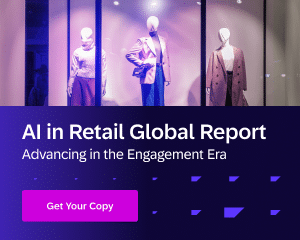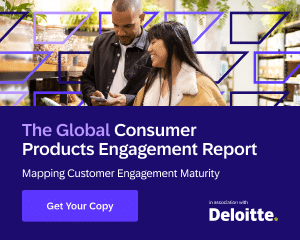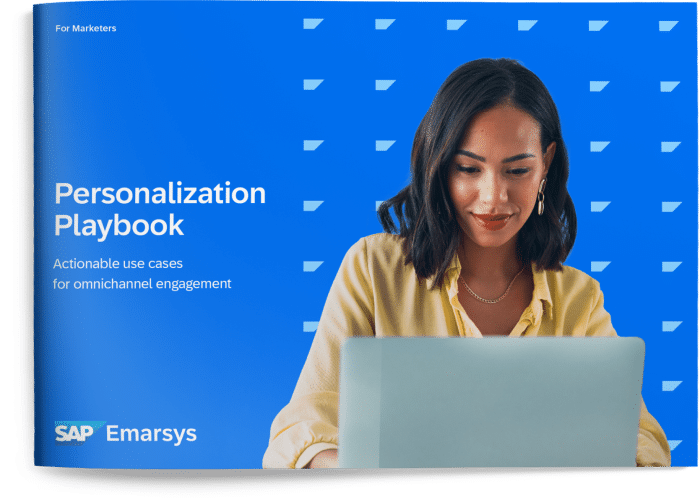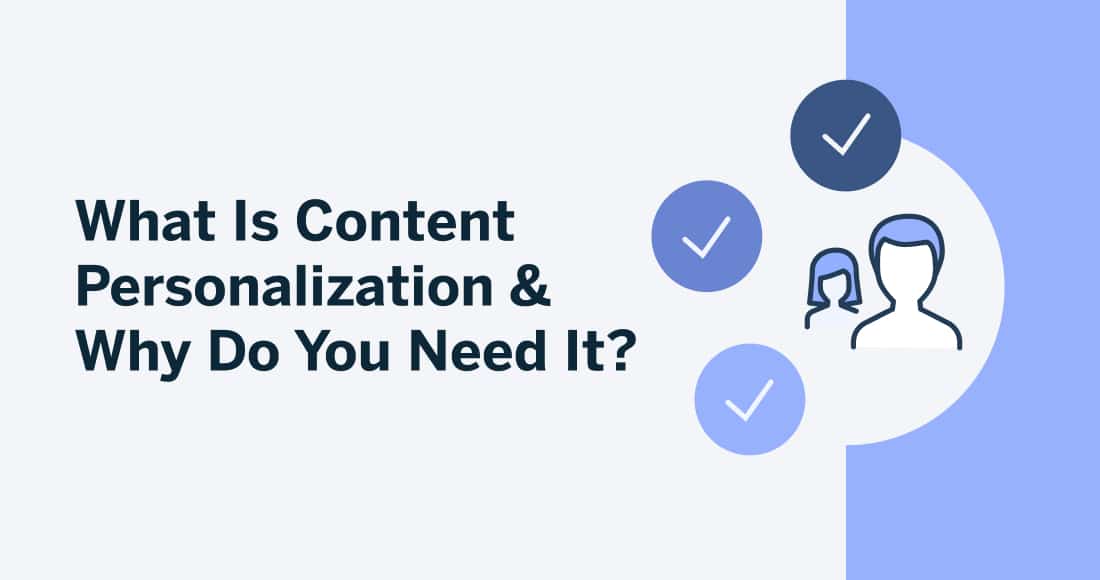The demands placed upon marketers by their customers are constantly increasing. Today, 63% of North American and UK consumers expect personalized content from the brands they engage with.
This tells us something incredibly important — personalization is no longer a “nice to have.” It’s table stakes for marketers, and if you can’t personalize your content effectively, you’ll struggle to earn your customers’ loyalty over brands that do.
In this article, we dive deep into content personalization, the benefits it holds for your business, how to get started with a personalization engine, and examples to inspire your personalized marketing strategy.
Table of Contents
- The Evolution of Content Personalization
- How Does Content Personalization Work?
- The Benefits of a Content Personalization Strategy
- The Role of Data in Personalizing Content
- 3 Content Personalization Examples We Love
- Content Personalization Continues to Evolve
- The Future of Personalization: Predictive Analytics
- Personalize Your Content at Scale with Emarsys
The Evolution of Content Personalization
Content personalization has evolved, and it’s evolved quickly. Ten years ago, when marketers thought about content personalization, they were thinking about first names in subject lines.
Today, personalization stretches far beyond this. The evolution of AI and customer engagement platforms has brought a wave of change to personalized marketing, allowing marketers to break new ground and get closer to their customers than ever before.
Previously, marketers had to take educated guesses on the types of engagements their customers wanted to receive based on limited personas and campaign analytics. Now, access to data eliminates the guesswork. By using new platforms to consolidate and enrich customer, product and sales data, marketers can build clear pictures of who their customers are, what they want, and which channels they want to hear about it on.
The result? Marketers are now able to deliver on their promise at scale — to deliver the right content, to the right person, at the right time. This is the core of omnichannel content personalization, and getting it right could be the difference between successful customer retention and increased churn.
How Does Content Personalization Work?
Content personalization is invaluable for marketers looking to engage customers on an individual level. The reality is that customers today not only prefer content that is tailored to their needs, but they expect it.
It’s not a new process by any means. Marketers and their brands have been building their content efforts around customer profiles for years. The defining difference in modern content personalization is that customer data and technology drive the process, and it’s more refined and effective than it has been in the past.
Building customer profiles and segmenting your audience is the backbone of any content personalization strategy, and having a wide range of customer data to start with makes it all the more effective.

The Benefits of a Content Personalization Strategy
Many of today’s most successful marketing teams are pulling away from campaigns that lack personalization and instead are building their strategy around personalized 1:1 campaigns. Here are three primary reasons why:
Boost engagement
In a sea of batch-and-blast marketing, content personalization is your secret weapon. Create content that speaks to the unique interests of your customers, and they’re going to listen up.
But why does this work so effectively? It’s simple — people crave relevance.
When your content aligns with your audience’s specific needs and interests, it resonates more deeply. This isn’t just about catching their eye — it’s about holding their attention. Personalized content does more than just surface on a customer’s radar. It stays there, fostering a deeper connection that defends against competitor marketing.
Promote brand loyalty and retention
Have you ever wondered why certain brands have such a devoted following? A key factor is how they use content personalization to make their customers feel valued and understood. Modern day marketing isn’t a monologue. To truly realize its power, you need to make it a two-way conversation by listening and reacting to customer behavior.
By tailoring content to the unique needs and interests of your audience, you show your customers that you’re not just trying to sell your products or services, but that you’re willing to listen to what they want, act upon what you hear, and build a long-term relationship.
Increase conversion rates
This personalized, conversational approach to marketing isn’t just good for loyalty — it’s a powerful tool for driving consumer action, too.
When your content is personalized and relevant, it’s also persuasive. Get the right product, in front of the right customer, at the right time, and they’re much more likely to buy.
Sally Europe leveraged this conversational approach to marketing, and they saw impressive results:
- 43% increase in email-attributed web sales growth YOY
- 19% increased in AOV with web recommendations
- 20% increase in total monthly sales attributed to digital communication channels
93% of consumers report receiving marketing communications that are not relevant to them, and 44% of consumers are willing to switch to brands who better personalize marketing communication. Personalized content is a golden opportunity for you to stand out, grow your audience, and drive tangible business results.

The Role of Data in Personalizing Content
Data plays a foundational role in any successful content personalization strategy. In order to unlock its full potential for driving growth, you’ll need to effectively capture customer data, consolidate and activate it, and act on the insights you get. We explain each step, in detail, below:
1. Capture customer data
Data is the key to content personalization. Without it, you won’t get the view of your customers that you need to tailor content to their interests, online shopping behavior, and past purchases. If your goal is to deliver meaningful 1:1 experiences to your customers, you need to truly know your customers, and this simply can’t be achieved at scale without zero- and first-party data.
However, when capturing data, you can’t expect customers to part with it without good reason. As a result, enticing value exchanges are critical. Consider different points in the customer’s journey where it’s appropriate to ask for data (e.g., when registering for your mailing list, following a purchase, etc.).
After you capture the customer data, deliver on your end of the deal: offer a superior experience uniquely tailored to the customer, one that your competitors can’t provide.
2. Consolidate, enrich, and analyze your data
The cornerstone of any successful personalization strategy is not just capturing data but ensuring that you can create a 360-degree view of your customers. The challenge lies in overcoming the barriers posed by data silos.
Breaking down these silos is essential. Without this, you’re looking at a fragmented view of your customer, which hinders the creation of truly personalized content. This is where the real work begins — the work of making your data not just accessible, but actionable.
This is where a customer engagement platform enters the scene. This platform is not just a repository for data — it’s the engine that drives personalization.
By integrating your data streams through such a platform, you can efficiently consolidate and enrich your data. The result? A unified, comprehensive view of your customers, which translates into actionable insights. These insights are the key to crafting content that resonates on a personal level, making your customers feel truly understood and valued.
3. Act on your insights
Your customer engagement platform will help you to unify your first-party data and build clear profiles that help you understand who your customers are and what they want. The next step is acting on these insights to build consistent, personalized engagements across the customer lifecycle.
Here are some actionable ways to leverage this data for creating personalized engagements across the customer lifecycle:
- Segmented email campaigns: Use customer data to segment your email list. Tailor your messaging based on their past purchases, browsing behavior, or engagement level. For instance, send targeted product recommendations to customers who have viewed similar items on your website.
- Personalized web channel experiences: Web personalization is a powerful tool. Customize the website experience for returning visitors. Display content, offers, and product recommendations based on their previous interactions. Imagine a user who frequently browses sports equipment greeted with the latest deals in that category upon their next visit.
- Customized mobile push notifications: If your business has a mobile app, use customer data to send personalized push notifications. For example, notify a user when an item they viewed repeatedly but didn’t purchase is back in stock or on sale.
- Tailored customer service: Connect your customer service teams with the same data as your marketing channels. This will allow for more personalized service experiences, as each agent will have access to customer browsing behavior, product affinity, past orders, and return history.
- Content personalization in direct mail: Even traditional channels like direct mail can benefit from personalization. Send postcards or catalogs with products and offers specifically chosen based on the customer’s purchase history or expressed interests.
By acting on the insights you’ve gained from unifying your customer data, you’ll be able to create a cohesive, personalized customer experience that engages them throughout their journey with your brand.
3 Content Personalization Examples We Love
Looking for a little inspiration to kickstart your content personalization?
Let’s take a look at how these industry-renowned brands are leading the charge for tailored engagements:
1. Happy Socks uses purchase, behavior, and location data to deliver personalized content across multiple regions

Happy Socks is a vibrant and innovative brand known for its colorful and creatively designed socks, transforming everyday essentials into high-quality, fun, and fashionable items.
In order to drive purchases and foster loyalty across multiple regions, Happy Socks takes a personalized approach to its content. Using Emarsys’ Predict tool, Happy Socks is able to see which categories key customer segments are most interested in, based on their past web and purchasing behavior. They then use this to target customers with personalized product recommendations.
To drive additional purchases, Happy Socks also leverages AI product recommendations tailored to SKUs that are available in each customer’s region, down to the warehouse that’s closest to them. With personalization tokens and Emarsys Scripting Language (ESL), Happy Socks created automations that seamlessly adjust content to each customer’s language, currency, and location.
2. Nike HK uses data insights to drive more relevant engagements

As one of the most recognized and influential brands around the world, Nike needs little introduction. Operating a large network of stores in Hong Kong, Nike HK needed to improve their customer interactions with personalized campaigns specific to Hong Kong customers.
Using Emarsys AI, Nike HK was able to use its first-party data to effectively segment its customers and build automations that target those customers based on purchase behavior, lifecycle stage, and churn rates. This increased content relevance improved Nike HK’s purchase rate by 8%.

By partnering with Emarsys, Nike HK gained a deep understanding of its customers by engagement level, brand loyalty, product affinity, and purchase motivation. With this clearer picture of customers, Nike HK was able to target their customer segments with personalized content during key seasonal campaigns, including Christmas and Lunar New Year.
Content Personalization Continues to Evolve
As we embrace the rapid advancements in technology, including the proliferation of the Internet of Things (IoT) and the growing influence of mainstream Artificial Intelligence (AI), the landscape of content personalization is undergoing a remarkable transformation.
These technological leaps are just the beginning of a new era in content personalization, pushing the boundaries of how we tailor digital experiences to individual preferences and behaviors.
AI and machine learning for personalization
True customer-centric personalization is a key goal for modern businesses, but many of them run into the same roadblock — 1:1 personalization is difficult to achieve at scale.
This begs the question – how can you scale your marketing while staying true to your customers and consistently delivering personalized content? Enter AI.
By leveraging AI and machine learning, you’ll be able to capture and consolidate large volumes of customer, sales and product data, activating it to create 1:1 personalized marketing engagements at scale. The more you use it, the smarter it will get.

The Future of Personalization: Predictive Analytics
Predictive analytics in marketing refers to the use of data, statistical algorithms, and machine learning techniques to identify the likelihood of future outcomes based on historical data. Platforms like Emarsys are already making this a possibility for brands, enabling them to tap into the full potential of data-powered marketing.
Backed by self-learning algorithms and predictive analytics, AI marketing platforms can help you determine which content will be most relevant to each customer, as well as when and where it should be delivered to yield the highest results.
The applications of this for customer lifecycle marketing are truly powerful. By enriching your customer profiles with conversion and churn probabilities, you get the insights you need to deliver 1:1 personalized campaigns that engage customers and drive action at key moments in their journey.
Personalize Your Content at Scale with Emarsys
Modern day customers deserve and demand 1:1 personalized experiences. For this reason, personalization of this level is absolutely fundamental to you achieving your marketing goals.
This is where Emarsys comes in. Trusted by over 1,500 industry-leading businesses, Emarsys is the customer engagement platform of choice for everyone from renowned enterprises to fast-growing mid-market brands. See how Emarsys can help you segment your audience and create a truly personalized marketing strategy — book a demo now.












